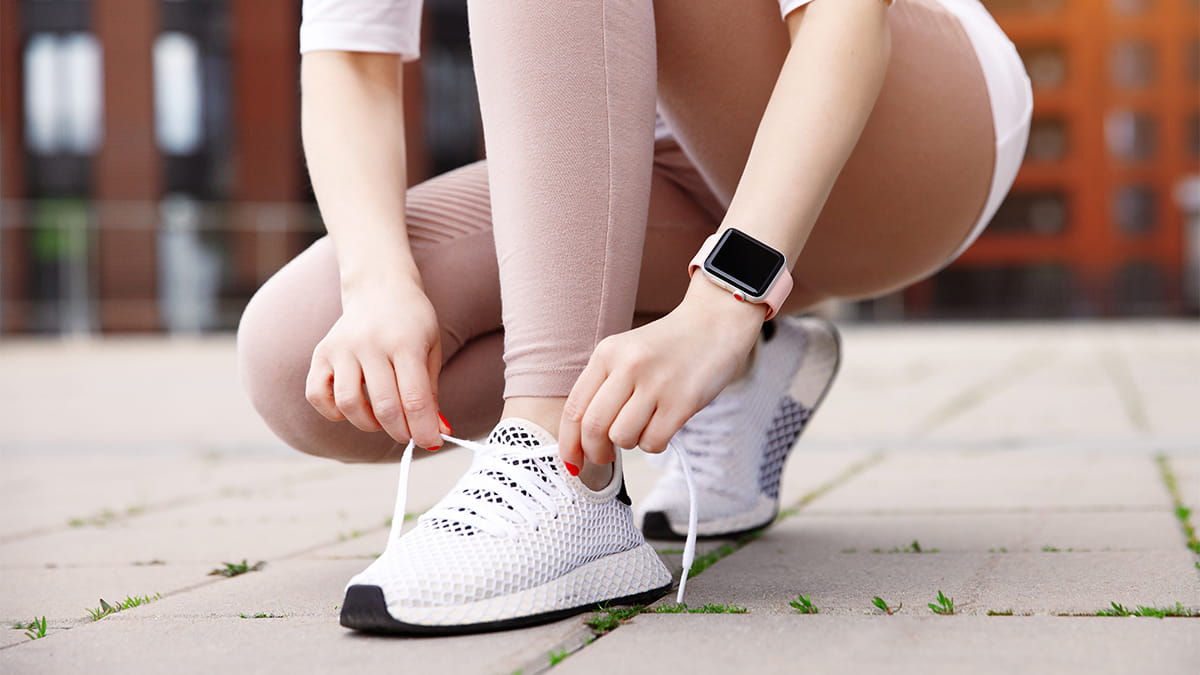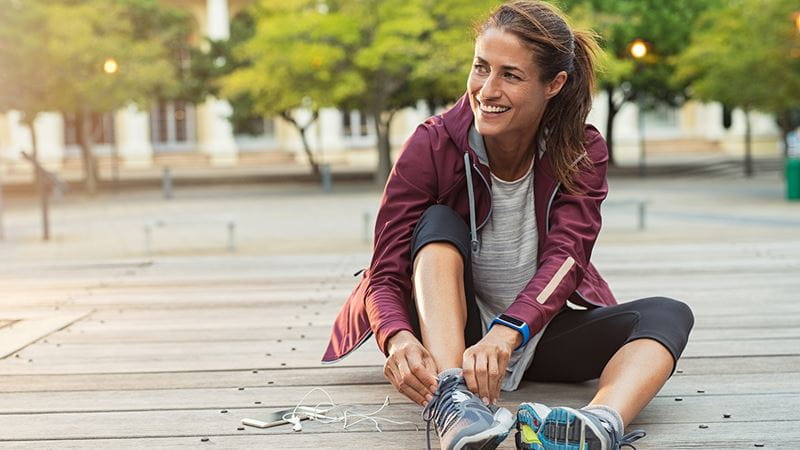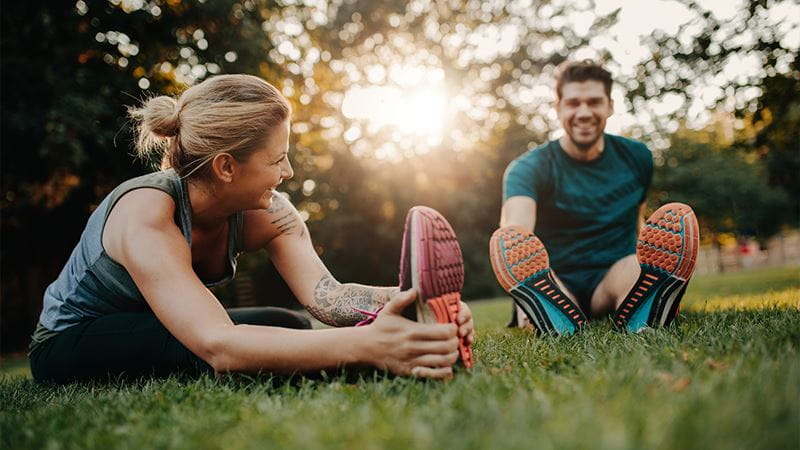Blog article
How to choose the right running or walking shoes

So, pull on your socks, lace up your metaphorical shoes, and get reading!
Understanding your foot type
Before jumping online and adding the most aesthetically pleasing running/walking shoe to cart, it's important to understand your foot type1. Feet come in various shapes and arch types, and identifying yours may help guide you towards the most suitable shoe.
A neutral arch promotes a healthy foot roll; low arches lead to excessive inward rolling or overpronation; and high arches result in a slight inward roll or underpronation upon impact2.
Those with a neutral arch are best suited to stability shoes with firm midsoles that are straight to semi-curved. If you have low arches, it may be beneficial to consider motion support shoes with arch support and high density foam for extra stability. And finally, if you have high arches, cushioning shoes may be the perfect option, helping you compensate for your lack of natural shock absorption2.
At HBF, we recommend visiting a podiatrist or utilising online tools2, 3 to determine your foot type, considering factors like arch height, pronation, and foot width.
Ultimately however, the most important factor when choosing your next pair of shoes is comfort. While understanding your foot type may help in finding the right shoe, numerous studies indicate that there isn't a universally "best shoe" for specific foot types. Your primary criteria for selecting new athletic footwear should revolve around comfort and the right fit2.
Choosing the right shoe for walking vs running
When in search of walking shoes, opt for a lightweight design with added shock absorption in the heel and under the ball of your foot. These attributes can potentially alleviate heel pain and minimise discomfort in the ball of your foot. Additionally, some individuals find a rounded or rocker bottom beneficial, allowing for smooth weight transition from heel to toe4.
If you're in search of running shoes and lean towards a classic design, prioritise attributes such as overall shock absorption and healthy torsional strength (inability for the shoe to twist easily) to minimise the risk of shin splints, tendonitis, heel pain, stress fractures, and other overuse injuries4.
On the other hand, if you're inclined towards a barefoot (minimalist) shoe, these options allow for a natural foot landing, almost akin to running barefoot. Minimalist shoes primarily provide grip and protection against ground hazards, with some designed to facilitate the transition from heel-first running to a barefoot-style approach, where the midfoot or forefoot makes initial contact with the ground4.
Getting the right fit
Ill-fitting shoes can lead to a myriad of issues, from blisters to more severe injuries, including shin splints and Achilles tendon pain, corns and bunions, ingrown nails, or postural issues and lower back pain4.
To help you choose the right running or walking shoes for you, here are some handy tips:
- Measure your feet: Feet can change size over time, so it's crucial to measure them regularly. Use the larger foot as your reference when selecting shoe size.
- Toe room: Ensure there is enough space for your toes to wiggle comfortably without being too loose. A thumb's width of space between your longest toe and the shoe's end is a good general rule.
- Try before you buy: Visit a specialty running or athletic store to try on different brands and styles. Walk or run around in the store to assess comfort and fit. You can always buy online later!
- Shop later in the day: When shopping for shoes, consider doing so after engaging in physical activity or towards the end of the day. This practice ensures that the shoes you choose provide optimal comfort, as your feet are at their largest during these times.
- Don’t forget your socks: When trying on shoes, wear the same type of sock that you intend to use during the activity. This ensures a more accurate assessment of the shoes' comfort and fit for your specific needs.
- Heel comfort: Ensure a secure fit by checking that the shoes grip your heel effectively. Movement should not result in slipping or discomfort in the heel area, emphasising the importance of a snug and stable fit.
Walking and running shoe longevity and replacement
Even the best running shoes have a finite lifespan. Factors such as mileage, visible wear and tear, and changes in comfort levels are indicators that it's time for a new pair.
As a general rule of thumb (or toe, if you will), consider replacing your running shoes every 650 to 950-kilometres3. Keep an eye on the midsole material – if you observe the white midsole peeking through the outsole or notice compression under your heel, it's a sign that replacement is due as the shock absorption of your shoe is all but gone.
Remember, regularly replacing your running or walking shoes helps prevent injuries and ensures continued support.
Make the most of your HBF membership and grab your next running and/or walking shoes from Running Warehouse and get 15% off full-priced online purchases*. To redeem your discount, simply enter your unique promo code online.


